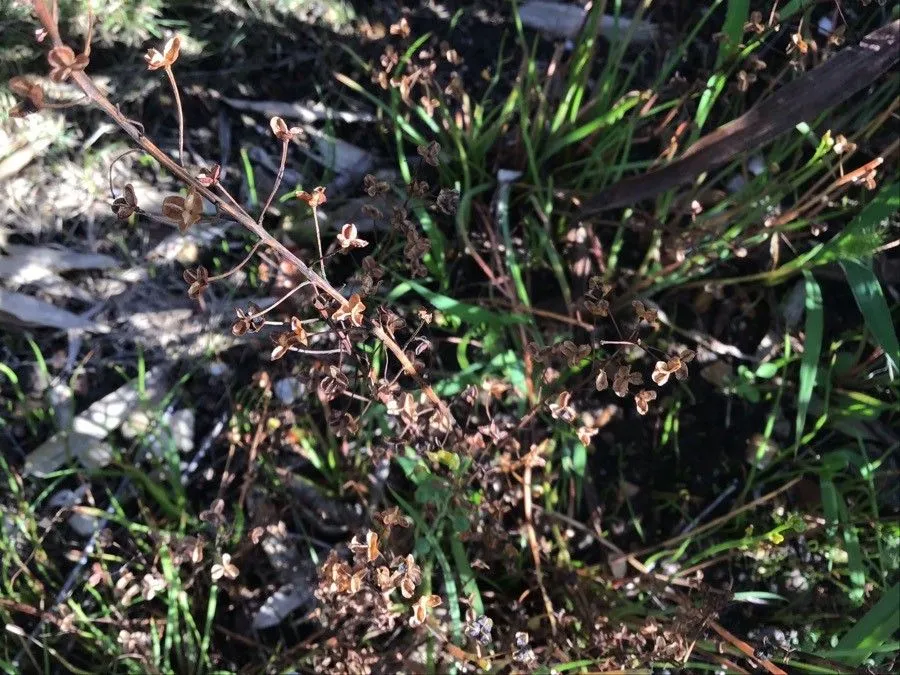
Author: (R.Br.) Haw.
Bibliography: Saxifrag. Enum. 2: 33 (1821)
Year: 1821
Status: accepted
Rank: species
Genus: Bulbine
Vegetable: False
Observations: S. & E. Australia
The Leek Lily, scientifically known as Bulbine semibarbata, is a captivating plant native to the landscapes of Southern and Eastern Australia. This remarkable species belongs to the Asphodelaceae family and has been observed thriving in various locales within its endemic regions.
First documented in the Saxifrag. Enum. 2: 33 in 1821, the Leek Lily was classified by the botanist Robert Brown and later reclassified by Haworth. Its botanical journey from initial discovery to present-day recognition underscores the enduring fascination this plant holds in the botanical community.
Characterized by its delicate and striking floral arrangements, Bulbine semibarbata is distinguished by its vibrant yellow blooms, which often capture the interest of both botanists and gardeners alike. The flowers are arranged in a raceme, a type of inflorescence that contributes to its aesthetic appeal. The plant itself is somewhat grass-like in appearance, presenting slender, cylindrical leaves reminiscent of those of a leek, which collectively create a unique and visually appealing form.
As is evident from its natural habitat, the Leek Lily is well-adapted to the diverse climatic conditions of Southern and Eastern Australia. It flourishes in environments ranging from coastal heathlands to dry, open woodlands, showcasing its versatile nature. This adaptability makes it a resilient species, capable of withstanding the variable weather patterns typical of these regions.
In addition to its ornamental value, the Leek Lily holds ecological significance. Its flowers attract a variety of pollinators, thereby contributing to the biodiversity of its native ecosystems. Furthermore, its presence in different types of habitats plays a role in soil stabilization and the maintenance of ecological balance.
Preserving the Leek Lily is not only crucial for maintaining botanical diversity but also for sustaining the ecological integrity of its native regions. Efforts to conserve this species encompass habitat protection and raising awareness about its environmental importance.
Overall, Bulbine semibarbata, or the Leek Lily, is a testament to the rich botanical heritage of Australia. Its resilience, beauty, and ecological role make it a plant of both scientific interest and natural wonder.
Eng: leek lily
Swe: bulbine
En: Leek lily
Sv: Bulbine
Taken Sep 28, 2020 by Diego Alex (cc-by-sa)
Taken Sep 28, 2020 by Diego Alex (cc-by-sa)
© copyright of the Board of Trustees of the Royal Botanic Gardens, Kew.
Growth habit>: Forb/herb
Family: Myrtaceae Author: (F.Muell.) K.D.Hill & L.A.S.Johnson Bibliography: Telopea 6: 402 (1995) Year: 1995 Status:…
Family: Rubiaceae Author: Pierre ex A.Froehner Bibliography: Notizbl. Bot. Gart. Berlin-Dahlem 1: 237 (1897) Year:…
Family: Sapindaceae Author: Koidz. Bibliography: J. Coll. Sci. Imp. Univ. Tokyo 32(1): 38 (1911) Year:…
Family: Asteraceae Author: A.Gray Bibliography: Pacif. Railr. Rep.: 107 (1857) Year: 1857 Status: accepted Rank:…
Family: Fabaceae Author: Medik. Bibliography: Vorles. Churpfälz. Phys.-Ökon. Ges. 2: 398 (1787) Year: 1787 Status:…
Family: Aspleniaceae Author: (Cav.) Alston Bibliography: Bull. Misc. Inform. Kew 1932: 309 (1932) Year: 1932…